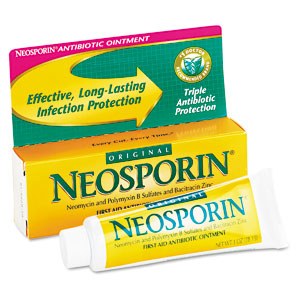
 They say curiosity killed the cat, but it at least gives it a lot of injuries and they may need some Neosporin now and then. Cats have a knack for getting themselves into trouble, either by climbing up the wrong tree, thinking a ledge is more secure than it is, or picking a fight with another cat and trading scratches.
They say curiosity killed the cat, but it at least gives it a lot of injuries and they may need some Neosporin now and then. Cats have a knack for getting themselves into trouble, either by climbing up the wrong tree, thinking a ledge is more secure than it is, or picking a fight with another cat and trading scratches.
When you see that they’ve managed to cut or scrape themselves, it’s only naturally to think of treating the wound the same way you might treat your own. That’s when the handy tube of Neosporin will pop in your head, because it’s kept right next to the the Band-Aids.
Neosporin is designed to help cuts heal faster, in humans that is. So let’s see if it has the same properties when dealing with our feline friends.
Can I Give My Cat Neosporin? Answer: Yes, But It’s Not Needed.
The main reason that Neosporin works for us is it contains antibiotic ointments that help keep a wound free of bacteria that can cause infection and make a cut last longer. It helps the healing process, not only in humans but also in pets. As long as you have the original brand of Neosporin, and not any of the spin-off brands they make, like Pain Relief or anything else, you should be fine for small, superficial cuts and scratches.
Anything bigger than that should be brought to your vets attention, and they will be able to dress the wound properly, including clipping away any hair from the area, cleaning it properly, and bandaging it so your cat won’t be able to lick at it and tear away the bandage. You don’t have to, and shouldn’t, play medic with your cat. If it’s a serious cut you should take them in to see if they might need stitches, or to have it properly dressed.
Cats and Cuts
It’s only naturally that your cat will eventually have a cut or a scratch, especially if they are an indoor outdoor cat. Their normal and natural response will be to lick their wounds, and in most instances this is the only treatment they’ll need in order for the cut to heal quickly and properly. Nature has given cats special saliva that not only cleans their coats, but is also good at cleaning up a small surface wound like a scratch or cut.
They’ll lick it clean and repeatedly tend to it. The best part is they’ll instinctively know when to stop licking it so the scab can form and the cut can heal up. You won’t really have to step in and treat their would, because they’ve got all they need and their instincts will tell them what to do, for how long, and when to stop.
When you start introducing unknowns like Neosporin into the picture, your cat doesn’t know what to do, and you can really make matters worse. They’re going to lick their wound, and this means they could end up ingesting Neosporin, which wouldn’t be good. You can try bandaging the would after applying the Neosporin, but they’ll be pretty good at clawing or gnawing at the bandage until they get it off.
Our Recommendation
You don’t really need to worry about Neosporin, and here’s why: Your cat will naturally attend to small, superficial cuts, and doesn’t need your assistance. For bigger cuts, they need to be taken to a vet and have their would handled by a professional. Either way, you don’t need to worry about the problem, and you could potentially be making matters worse for your cat.
It’s easy to be overprotective as a cat owner, because you don’t want anything bad to happen to them, like getting an infected cut, or experiencing the pain of having an injury. While we as humans have a pretty robust assortment of things to apply to our skin when we get cuts or scrapes, in the animal world they have their own methods for dealing with these matters. They don’t make a big deal out of it, and they’ve been able to survive for thousands and thousands of years as a species taking care of the day to day bumps bruises and scrapes that come with being a cat.
